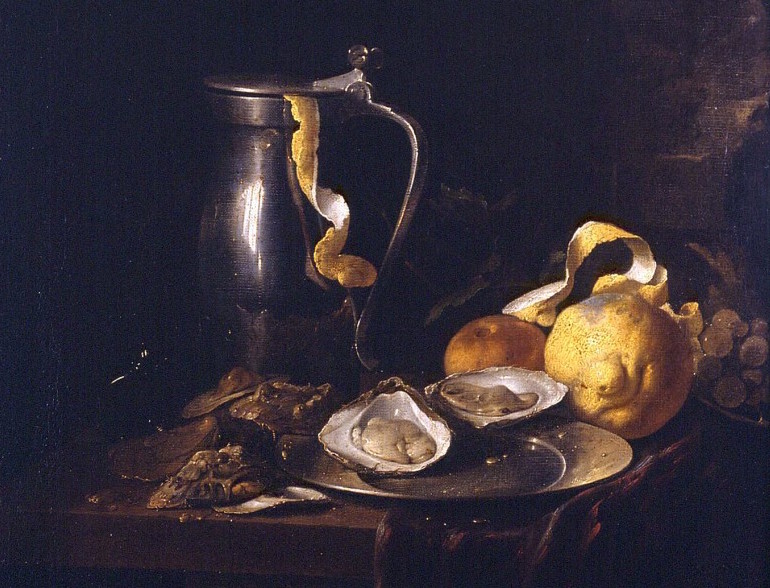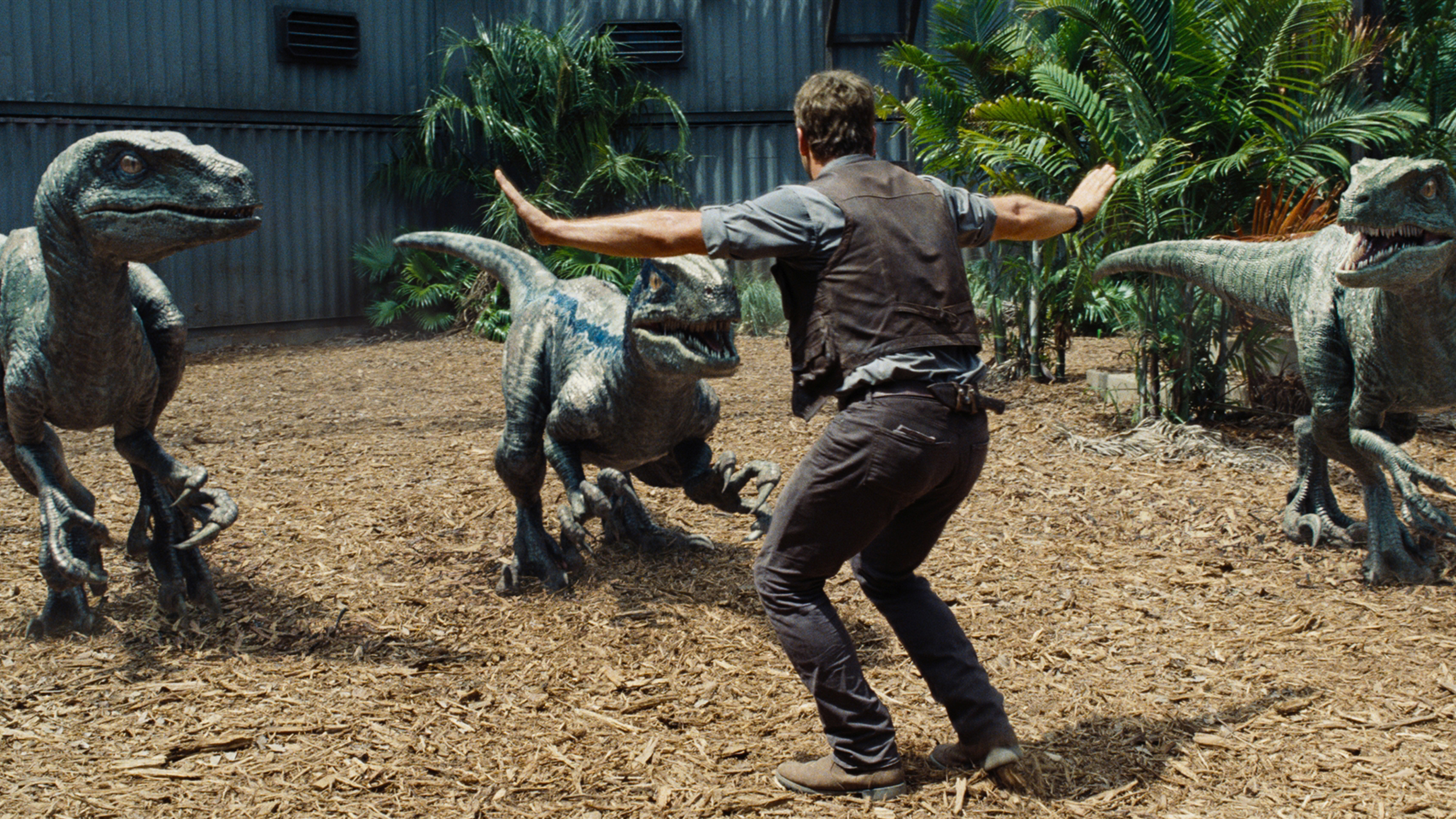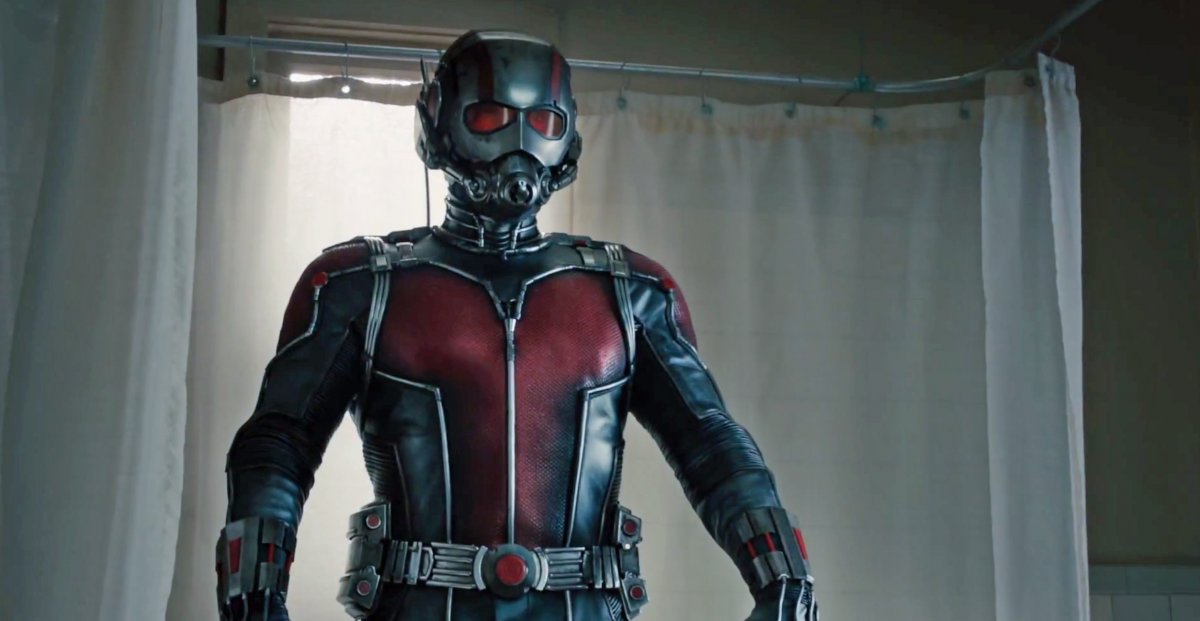More than just buzz: Elbow's knockout EP
Elbow — an English rock band that is fulfilling the promise I once heard in Coldplay, and who are consistently taking risks and embarking on songs so ambitious that U2 would do well to learn form their example — have followed up my favorite album they've released so far (2014's The Take Off and Landing of Everything) with an impressive EP called Lost Worker Bee.
Why an EP? Sounds like the band is involved in a variety of side projects, including a solo debut for lead singer Guy Garvey (mentioned here).
Here's my favorite track on the EP — which sounds like they owe Brian Eno a credit just for inspiration. Thanks to Daniel Melvill Jones for waking me up to this sneaky little release.
https://www.youtube.com/watch?v=GEdLMkyeoJ4
To think through things, that is the still life painter's work — and the poet's. Both sorts of artists require a tangible vocabulary, a worldly lexicon. A language of ideas is, in itself, a phantom language, lacking in the substance of worldly things, those containers of feeling and experience, memory and time. We are instructed by the objects that come to speak with us, those material presences. Why should we have been born knowing how to love the world? We require, again and again, these demonstrations.
- Mark Doty, Still Life with Oysters and Lemon
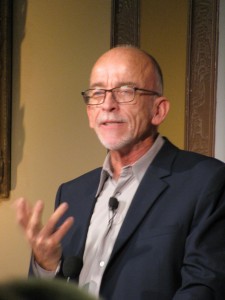
Hmmm. This sounds suspiciously... sacramental to me.
And in a time when so much so-called "Christian art" is obviously made in a way that prioritizes ideas over embodiment, it could be very useful to the discussion.
I'm adding it to The Looking Closer Book of Wisdom.
Official Movie of the New England Patriots?
Children, in view of the recent revelations about the New England Patriots' legacy of cheating, I've got a great movie recommendation for you.
It'll inspire you to strive to make enough money so that you can cheat, lie, destroy evidence, and eventually overpower ideals of law and justice to become the American ideal.
You'll be able to say and do whatever you want, accessorize with a supermodel girlfriend... and people might even rally around you for a presidential campaign.
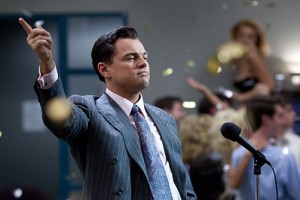 Check out The Wolf of Wall Street, and then you can quit worrying about things like ethics and conscience and get back to the more important business of pro sports and American leadership.
Check out The Wolf of Wall Street, and then you can quit worrying about things like ethics and conscience and get back to the more important business of pro sports and American leadership.
It turns out that Martin Scorsese's movie was pretty much prophetic.
This is the nature of "heroism" in America now. This is how you win championships and glory. You spend it all. Including character. Including integrity.
So, go Tom Brady!
Go Patriots!
And let's not forget Brady's endorsement of another winner for the 2016 presidential election, who seems to be a follower of the same gospel.
Sure, #AllLivesMatter, but something else matters more
Once again, a member of my own university community has inspired me with some piercing insight.
You've heard the slogan: "Black Lives Matter." Its become a rallying cry across the nation.
And you've probably heard what some Christians are hurrying to propose an alternative: "All Lives Matter."
Is that an appropriate response?
Brenda Salter McNeil — SPU associate professor of reconciliation studies, and director of the reconciliation studies minor — answers that question in this Today's Christian Woman feature by Patricia Raybon about her voice and vision.
Check this out:
As Christians, because of our fear of saying or doing the wrong things—and our desire to be kind and also not to feel guilty—we rush to say ‘All Lives Matter.’”
But that’s premature, Dr. Brenda says, because “it doesn’t sit with the pain, the hurt, the collective grieving that we saw in Charleston. For me to say ‘Black Lives Matter’ doesn’t deny that you hurt, or that all hurt. But right now, I hurt. It asks, Can you sit with me and acknowledge my pain?”
...
Such empathy aligns with the gentle strength manifest as a gift of the Spirit, Dr. Brenda says. Shepreached this message at her Seattle church (Quest Church), emphasizing the power of responding gently to someone else’s pain, on the Sunday immediately following the Charleston tragedy.
“Theologically, as Christians, we can be crippled by the way we think of our individual relationship with God. He’s my personal Savior. I invited Christ into my heart,” she says. “That’s true, but we’re limited when there’s a social problem that’s not about one person. If someone says ‘I’m in pain,’ the next statement you make should not be ‘I’m in pain too.’
“In that moment, gentleness is having the strength to restrain my need to feel better about myself or to be heard too. Instead,” Dr. Brenda says, “in that moment, gentleness would be to handle someone else’s pain with such care, such dignity, such respect that I’m not saying ‘All Lives Matter’—but rather, ‘It’s your turn. And I offer the respect to grieve with you in this moment.’”
I wonder if this is why, as much as I love R.E.M., the song "Everybody Hurts" never sounded very comforting to me.
https://www.youtube.com/watch?v=ijZRCIrTgQc
Art, whether Christian or not, can't properly begin with a message and then seek for a vehicle. Its roots lie, rather, in the single story or metaphor or configuration of sound or shape which requires attention and development from the artist. In the process of that development, we find meaning we had not suspected; but if we try to begin with the meanings, they will shrink to the scale of what we already understand: whereas the creative activity opens up what we did not understand and perhaps will not fully understand even when the actual work of creation is done.
- Rowan Williams, Anglican bishop, theologian, poet, and former Archbishop of Canterbury
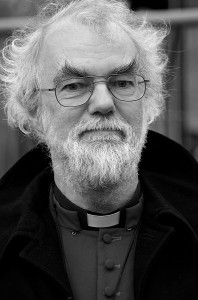
Thanks to my friend Bruce Kirby for passing that along.
It's going in The Looking Closer Book of Wisdom.
If you're interested in hearing more from Williams, read this recent interview with him in Image.
Podcast: Moviegoer temper tantrums
Jurassic World turned Alissa Wilkinson into the film-critic equivalent of a Rampaging T-Rex.
Under the Skin got under Nick Olson's skin.
And Only God Forgives infuriated me.
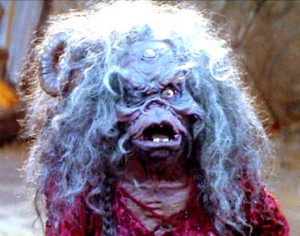
And thanks to the Seeing and Believing podcast, and its host Kevin McLenithan, we all had the chance to vent our frustrations in front of a microphone.
It happened in August, in Santa Fe, New Mexico, on the campus of St. John's College, during The Glen Workshop.
Then, to restore balance to the Force, we flung expressions of praise and gratitude for great movies into the air like streamers and confetti.
Finally, we made some current recommendations of movies that you probably haven't seen.
So listen to this rare convergence of strong opinions.
As Wade Bearden says, "You know those conversations you’d like to be a fly on the wall for? This one is it."
Ant-Man (2015)
Once again, I took a chance on a superhero movie based on positive buzz from some typically reliable sources. Once again, I just don't get what they're so excited about.
There was a time when I might have found this film exhilarating — and it's worth noting that I'm referring to a time when these assembly-line desserts hadn't become the main staple of America's moviegoing diet, served up on an almost weekly basis.
Ant-Man is yet another blockbusting Baskin Robbins ice cream sundae, built from the usual ingredients, with a few idiosyncratic brand-candy toppings to qualify it as the Flavor of the Week. If you approve of the steady diet of Baskin Robbins product being served to you, well, here you go. I realized a long time ago that these servings always leave me feeling the same lingering unpleasantness. The artificial ingredients — vague ideals of good and evil (or, rather good guys and bad guys); generic hero motivations ("I need to be a man for my daughter!"); training montages; an unsettling sense of patriotism based on America's unhealthy self-appointed-savior-of-the-world status; speeches about power and responsibility; action set pieces; the glorification of an Übermensch ideal that tells us we can solve our problems through steroidal enhancements of some kind; the setting up of a villain for the exhilaration of seeing him destroyed; violently cathartic showdowns; deafening-explosion punctuation marks — are calibrated to produce a sudden sugary rush of adrenalin. The unlikely hero gets the girl, the victory, and the status of Awesome, and then there are the credits with a teaser for next week's Flavor of the Week (to keep us coming back in the hopes of something more and better). This almost always sends me crashing into a sense of vague disappointment, even regret, and a lingering feeling of hollowness... a sense that a weakness of mine has been exploited.
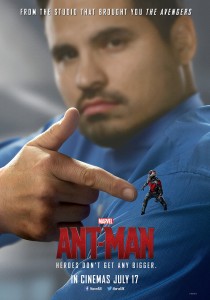
Ant-Man is exactly that: the same tepid, timeworn routine with a few chocolate sprinkles of "fun" on top. Sorry, but three or four minutes of unconventional goofiness or cleverness do not make the other 100 minutes any less methodical and disappointingly familiar.
I'm trying not to hold the absence of Edgar Wright against this film — a true mad scientist who would have cooked up something surprising. His departure from the project might have been a sign that he wasn't following the Baskin Robbins formula. But what's really hard to believe is that this factory product ame from the same wild imagination that served up Down With Love. (Now that was a dessert full of substantial surprises.)
Even Ant-Man's cast seems vaguely bummed, like a professional basketball team whose genius coach gave up on them right before game time. This is the first time I've ever seen Michael Douglas or Bobby Cannavale fail to strike even one interesting note in a movie. And every typically likable Paul Rudd-ism — of which there were surprisingly few — gets squashed by a dopey "I want to be the man my daughter thinks I am" beat.
And poor, poor Evangeline Lilly — wearing a hairstyle that says "Me? No, I had nothing to do with those terrible Hobbit movies! You must have me mistaken for somebody else!" — is stuck with a character that contradicts all of Joss Whedon's hard work to give women some equal footing in the Marvel universe. (Her big scene at the end feels less like a consolation prize and more like a condescending pat on the head.)
Only Michael Peña seems to be having any real fun here — he's just amusing enough to make me wish he'd been cast as Ant-Man. Now that might've been a hoot.
I couldn't help but notice that, while the audience applauded half-heartedly during the end credits, their enthusiasm didn't come anywhere close to the joyful ovation that they gave the Star Wars trailer that ran before the movie — a trailer that's already a couple of months old.
Marvel has become its own antonym.
I’ve spent my life trying to undo habits — especially habits of thinking. They narrow your interaction with the world. They’re the phrases that come easily to
Inside Out (2015)
Take a deep dive into your own head. Do an archaeological dig. Work your way all the way to the center. What do you find?
Core memories. Foundational impressions. The moments that made you.
Me? Mine are almost all related to creativity:
- Reading books — fairy tales and fantasy, mostly.
- Writing and illustrating my own fantasy stories with crayons, and then learning how to type out the words with my index finger on a typewriter.
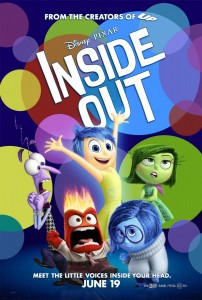 - Drawing pictures on church bulletins during church while my mom softly shushed me.
- Drawing pictures on church bulletins during church while my mom softly shushed me.
- Opening presents on Christmas morning at my grandparents' house, and discovering that my grandfather has built me my very own puppet stage.
- Hanging out with my dad while he read theology books and graded high school students' papers all evening.
- Playing basketball in the backyard all by myself, inventing new variations on the game, and pretending to be every player on opposing teams as I acted out whole games.
- Watching Disney's Snow White and the Seven Dwarfs on the big screen, and The Muppet Show on our temperamental black and white TV.
- Listening to long-playing Disney records based on their animated feature films.
All of these memories have a significant influence on who I am today.
I wasn't thinking about core memories at the time. I was just experiencing life, making choices, and learning. I wonder how things might have been different if I, at that young age, had understood the tremendous value of the memories I was forming, of how they would shape my life in years to come.
I did, however, think about emotions a lot. I was generally happy, and bursting with creative energy. I don't remember much sadness. Disgust? I hated lima beans and the ammonia smell of my grandmother's hair perm chemicals. Anger? My family has always had a way of suppressing anger, so that I have only the faintest traces of memories related to anger, and have never learned very well how to express it.
What would I have thought of Disney/Pixar's Inside Out if it had opened when I was a kid?
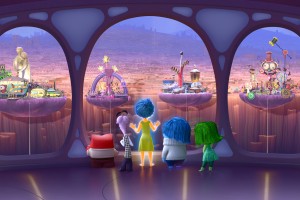 This summer, thanks to director Pete Docter, kids are going to be thinking about core memories and about how those impressions are forged in the furnaces of their minds and hearts. And I guarantee you that many of those kids will feel the magic hands of Disney's artists holding dramatic influence over their own foundational impressions. Inside Out announces itself as a movie about emotions — and it is — but it's also about the making of our minds. And the minds that made it are among the wildest imaginations making movies today.
This summer, thanks to director Pete Docter, kids are going to be thinking about core memories and about how those impressions are forged in the furnaces of their minds and hearts. And I guarantee you that many of those kids will feel the magic hands of Disney's artists holding dramatic influence over their own foundational impressions. Inside Out announces itself as a movie about emotions — and it is — but it's also about the making of our minds. And the minds that made it are among the wildest imaginations making movies today.
Inside Out tracks a world inside the mind of 11-year-old Riley, who is growing up, trying to cope with fear, sadness, anger, disgust, and joy as her loving family makes a major life change that requires an intense process of change.
To help us navigate this territory, Docter and his team of first-class storytellers have imagined Joy, Sadness, Anger, Fear, and Disgust as characters who run the command center — "Headquarters" (pun intended) — of Riley's mind. They are the crew of her own personal Starship Enterprise, charting her course through new worlds (like school), seeking out discovery and wonder and excitement (on the hockey rink), helping her process strange new sensations (like... the attention of boys), and taking her where no young girl has gone before.
Inside Out's Emotions are a technicolor dream team — luminous, hyper-charged for action, and perfectly voice-cast so that we could slap emotional name tags on them just by the sounds of their voices. And they're perfectly illustrated so that the youngest viewers can tell them apart, older viewers can appreciate nuances in their characters, and merchandisers can invent innumerable toys bearing their distinct likenesses.
Let's line 'em up:
1. Joy (voiced ebulliently by Amy Poehler) has the upper hand in Riley's head. She's enthusiastic, giddy, and made of a sort of Hostess Twinkie material (in close ups, her edges seem spongey, effervescent, and ephemeral, as if she's an energy field). She's a sort of carbonated Tinkerbell inspired by a Coldplay song: She's all yellow.
2. Anger (Lewis Black) is as short and stout as Roger Ebert's thumb's up and red as a bursting blood vessel; expect to see his face used as an emoji for blinding rage.
3. Fear (Bill Hader) is skinny, purple, and bendy as spaghetti al dente — and it's his job to set off alarms regarding Riley's safety.
4. Disgust (Mindy Kaling) strives to save Riley from dangerous substances like... broccoli.
And 5. Sadness (Phyllis Smith), a gloomy gumdrop who literally has the blues... well, what good is she? Suppress her! Resist her! Try to lock her up! She'll still taint memories, she'll still spoil moods, and eventually she'll threaten to wreck all of Joy's endeavors to keep Riley happy.
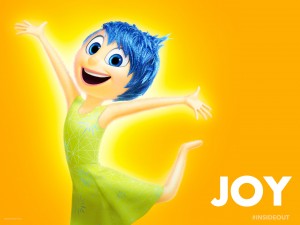 The emotions work together like the best sitcom teams — from The Mary Tyler Moore Show to Seinfeld to 30 Rock — as they move through a glorious wonderland from Headquarters to the vast library of Long Term Memory to the all-important Memory Islands under construction: islands that represent categories of memory that determine Riley's identity — family, play, imagination, sports, and more. And while you're on the dizzying bridges from Headquarters to the islands, don't look down! There are darker and more disturbing realms to be found deep in the canyons of memory. But I'll let you discover for yourself what's waiting there, what sleepers might awaken from the shadows. For now I'll just say this: Remember that fantastic scene in Toy Story 2 when Woody climbs around on a sleeping giant and tries not to wake him? There's another version of that scene here... and it's kind of terrifying.
The emotions work together like the best sitcom teams — from The Mary Tyler Moore Show to Seinfeld to 30 Rock — as they move through a glorious wonderland from Headquarters to the vast library of Long Term Memory to the all-important Memory Islands under construction: islands that represent categories of memory that determine Riley's identity — family, play, imagination, sports, and more. And while you're on the dizzying bridges from Headquarters to the islands, don't look down! There are darker and more disturbing realms to be found deep in the canyons of memory. But I'll let you discover for yourself what's waiting there, what sleepers might awaken from the shadows. For now I'll just say this: Remember that fantastic scene in Toy Story 2 when Woody climbs around on a sleeping giant and tries not to wake him? There's another version of that scene here... and it's kind of terrifying.
The less you know from this point on, the better. This this — more than any other Pixar movie — is an experience of constant and joyous surprise. Suffice it to say that the hardships Riley suffers end up catapulting Joy and Sadness out of Headquarters, leaving Anger, Disgust, and Fear to rule her roost. Most of the film is concerned with Joy and Sadness learning to get along as they try to make their way back to headquarters while the troubles that separated them in the first place continue to devastate Riley's psychological cosmos.
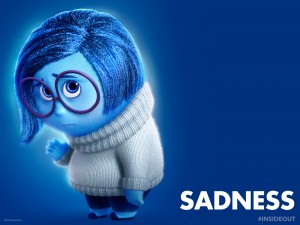 And who hasn't experienced such things? Director Pete Docter, who proved himself a virtuoso of emotional storytelling when he made Monsters Inc and Up — has found a phenomenal visual vocabulary for helping us understand what happens to so many of us when we find ourselves in situations where we have lost control our circumstances.
And who hasn't experienced such things? Director Pete Docter, who proved himself a virtuoso of emotional storytelling when he made Monsters Inc and Up — has found a phenomenal visual vocabulary for helping us understand what happens to so many of us when we find ourselves in situations where we have lost control our circumstances.
In fact, every beat of this story rings true, and what's more — this time, Docter paces the story's emotional stages so that things intensify brilliantly. We become so swiftly acquainted with the beauty of the landscape of Riley's mind that we can feel what's at stake right away. And so we can feel regions of our own minds resonating in empathy for Riley as she suffers various crises. We can sense that her whole future, her passions, her talents, and her loves could all come crumbling down in a matter of moments if she is not surrounded by love and care.
I don't think I've ever seen a film that more powerfully portrays the fierce intelligence, but also the fragility, of a child's mind for moviegoing audiences. Your mileage may vary, but I was moved to tears within the first 15 minutes — not by sentimentality, but by that rare experience of imagining things I had never thought about before, recognizing them as true, and then realizing the implications for me and for those I love. So many names of friends and family members went through my mind at different points in this journey, as I thought of survivors of emotional abuse, of children dealing with catastrophic loss, of adults still burdened by the lasting effects of childhood trauma.
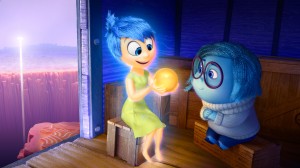 And yet — don't get me wrong — the overwhelming mode of this movie is joy.
And yet — don't get me wrong — the overwhelming mode of this movie is joy.
Lest I give the impression that I'm one of those raving Pixar fanboys, I will say this: I would have written the last act of the film a little differently. And I was not surprised to find that my good friend Steven Greydanus, film critic for DecentFilms.com, and I agreed on what storytelling points could have used some strengthening. Let's just say that they involve the ways in which Riley's Memory Islands — the fragile "national parks" of her experience geography — prove to be vulnerable to trauma and calamity, and how the film ends up resolving the problems that occur there. That last act resolves very, very quickly when it seems to me that a more patient depiction of the conclusion might have felt more true and persuasive.
But that's a minor storytelling quibble. Make no mistake: This is another standard-setting achievement for Pixar. Their methods for crafting movies are legendary, but this may be the greatest triumph of their process: The story, according to Pete Docter and his producer Jonas Rivera, went through so many drafts, and so many drastic revisions, that they didn't even know the basic plot until several years into the project. Now, audiences get to reap the rewards of their courage, their high standards, and their willingness to keep trying. Beyond the story, everything else is perfectly calibrated: the cast, the animation, the sound, Michael Giacchino's musical score. This is the work of artists in peak form, working collaboratively, with all of their priorities in the right places. It has the cosmic scope of WALL-E, the big beating heart of Up, the indelible personalities of Toy Story, and a storytelling arc as strong as Finding Nemo.
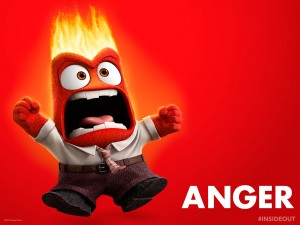 It also has the funniest end-credits surprises of the whole Pixar catalog, so stay in your seat.
It also has the funniest end-credits surprises of the whole Pixar catalog, so stay in your seat.
I can't help but wonder how the ideas presented in this movie will affect the way children think about their own minds, their own memories, their own emotions. What a strange thing for a child — to begin imagining these forces of emotion and energy as individual identities, a community of little angels running around inside her head trying to hold her together through hardships.
I wouldn't be surprised if Inside Out becomes the most socially influential work of this studio's library of exemplary motion pictures. It's a story that will prove to contribute meaningfully to conversations between parents and children, spouses, friends, and even communities for many years to come. For all of the technical skill on display, what makes this movie live is its marriage of head and heart, science and spirit, imagination and love. It's the kind of movie that will promote the healing of psychological and relational wounds, prevent injuries, increase empathy, and strengthen bonds of relationship. Any meaningful film-recognition event at the end of 2015 — Are there any meaningful film-recognition events? — would give this serious top-honors consideration.
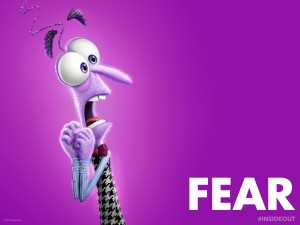 What's more — I want sequels. Docter and Company have only scratched the surface of the possibilities that this new storytelling geography opens up for us. I want to visit other characters minds. I want to see how this paradigm allows us to consider challenges such as the formation and dissolution of prejudice; differences in people's formations of faith; how anger leads to violence and the damage that this does in the mind of the one carrying out that violence. The vocabulary offered here is so promising in helping us recognize what ails our hearts and minds.
What's more — I want sequels. Docter and Company have only scratched the surface of the possibilities that this new storytelling geography opens up for us. I want to visit other characters minds. I want to see how this paradigm allows us to consider challenges such as the formation and dissolution of prejudice; differences in people's formations of faith; how anger leads to violence and the damage that this does in the mind of the one carrying out that violence. The vocabulary offered here is so promising in helping us recognize what ails our hearts and minds.
So I cannot recommend Inside Out highly enough for moviegoers of all ages. When I think about it, I find my own emotions having a shouting match: Anger rages about just how much mediocrity families must endure at the movies before they find something innovative and meaningful that all ages can enjoy. Fear frets about whether moviegoers will give this film a warm welcome, or if they'll all just choose the familiar routines of rampaging dinosaurs and scenes of urban destruction. Sadness watches the world of mainstream movies devolve into merchandise-driven franchise-building and stories of fighting our fears with violence.
But Joy... Joy celebrates that we live in the age of Pixar, which has — time and time again — overcome the odds to deliver works of lasting, love-filled animation and imagination.
I'll let others rush to decide how Pixar's movies stack up now. I'm content to welcome them back, and thank them for reminding me of what is possible when artists have the freedom to follow their imaginations into undiscovered worlds... both outside and inside.
Mourning with those who mourn
In memory of Clementa Carlos Pinckney (1973-2015), Democrat, South Carolina Senate; senior pastor of Mother Emanuel A.M.E. [African Methodist Episcopal] Church; martyred with eight of his congregation while they studied scriptures and prayed together in the church.
You can read much more about Pastor Pinckney and his church here.
It was one year ago this month that shots rang out on our campus at Seattle Pacific. And the community responded by gathering in grief, in support, in prayer, and, when the truth was learned, in grace and love toward the antagonist. I was blessed, and taught, by their response.
Today, those of us on campus are gathering in SPU's prayer chapel to pray for our grieving neighbors at Emanuel AME Church in Charleston, South Carolina, and for the troubled heart of the suspect in custody.
 Elsewhere — specifically, online, from angry responders (a wide range, including suit-and-tie white guys) — I'm already seeing waves of rage and hate directed at the shooter.
Elsewhere — specifically, online, from angry responders (a wide range, including suit-and-tie white guys) — I'm already seeing waves of rage and hate directed at the shooter.
I understand the anger. I'm angry too. And I'm sure that my feelings are feeble when compared to what this South Carolina community must be feeling.
But I am trying to keep in mind that I am called to respond with love not only for this community — they need an outpouring of love and grace for this catastrophic loss — but I am also called to do what I can to overcome evil with good, remembering that it is never as simple as "That man is evil."
The media, focusing on the shooter far more than those who were killed and those who suffered loss, are rolling out more and more details about the influence of white supremacists, yes... but *also* about a boy whose troubles led him into drug use, which had led him into trouble with the law, and who was, in spite of all of these things, given a gun for his birthday by his own father.
Many forces -- poverty (and I don't just mean economic poverty), ignorance, racism, the accessibility of weapons, and more -- were at work here. But responding to hatred with calls for retaliatory violence and death (which I'm seeing in many places) do more harm than good. This is an opportunity to remember Jesus's own example, and concern ourselves not only with the grieving, but also with the troubles of those who set the stage for such violence through neglect, irresponsibility, hatred, and ignorance; and for the dissolution of destructive and retaliatory rage that such incidents can trigger.
Jesus reached out in care for his heartbroken mother, but he also prayed for grace for those who were in the act of killing him with their hatred. Far be it from me to say to Jesus, "Lord, now is not the time to ask us to love our enemies as well as our grieving brothers and sisters. Can't that wait?"
Every day, the sign at the entrance to Seattle Pacific University repeats what seems an impossible charge: Seek justice; love mercy; and walk humbly with your God.
Father, forgive them... and forgive us... when we know not what we do.
[Thanks to Melody Fields for the link and the exhortation to mourn with those who mourn and honor the fallen.]

